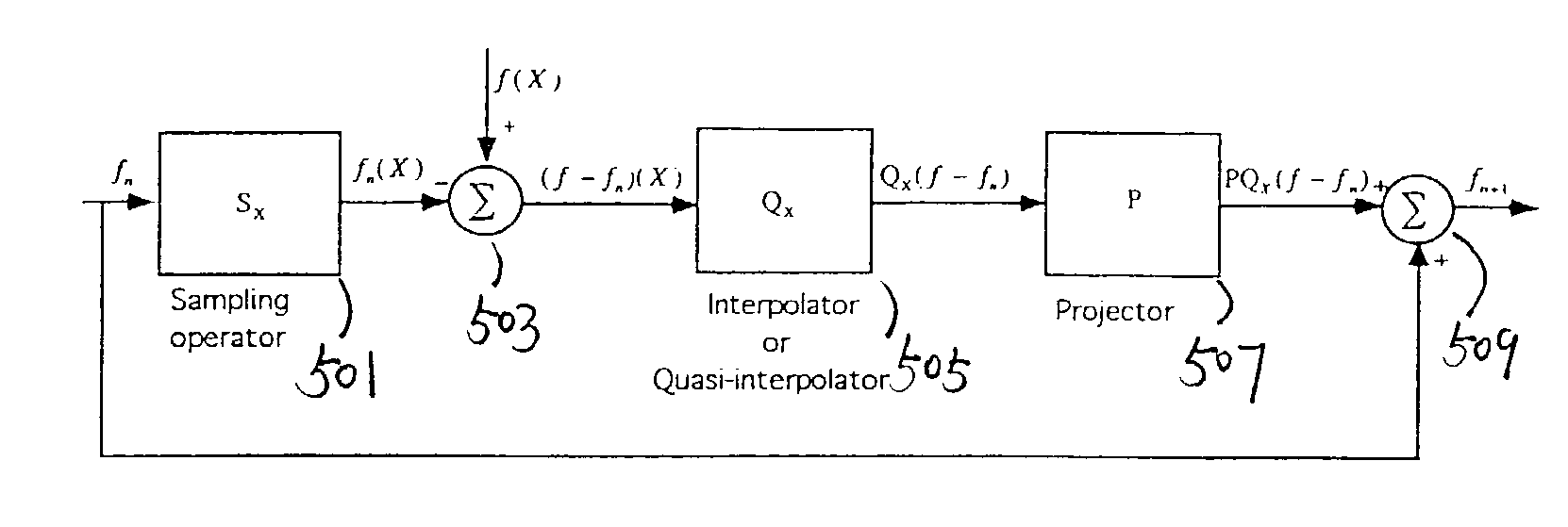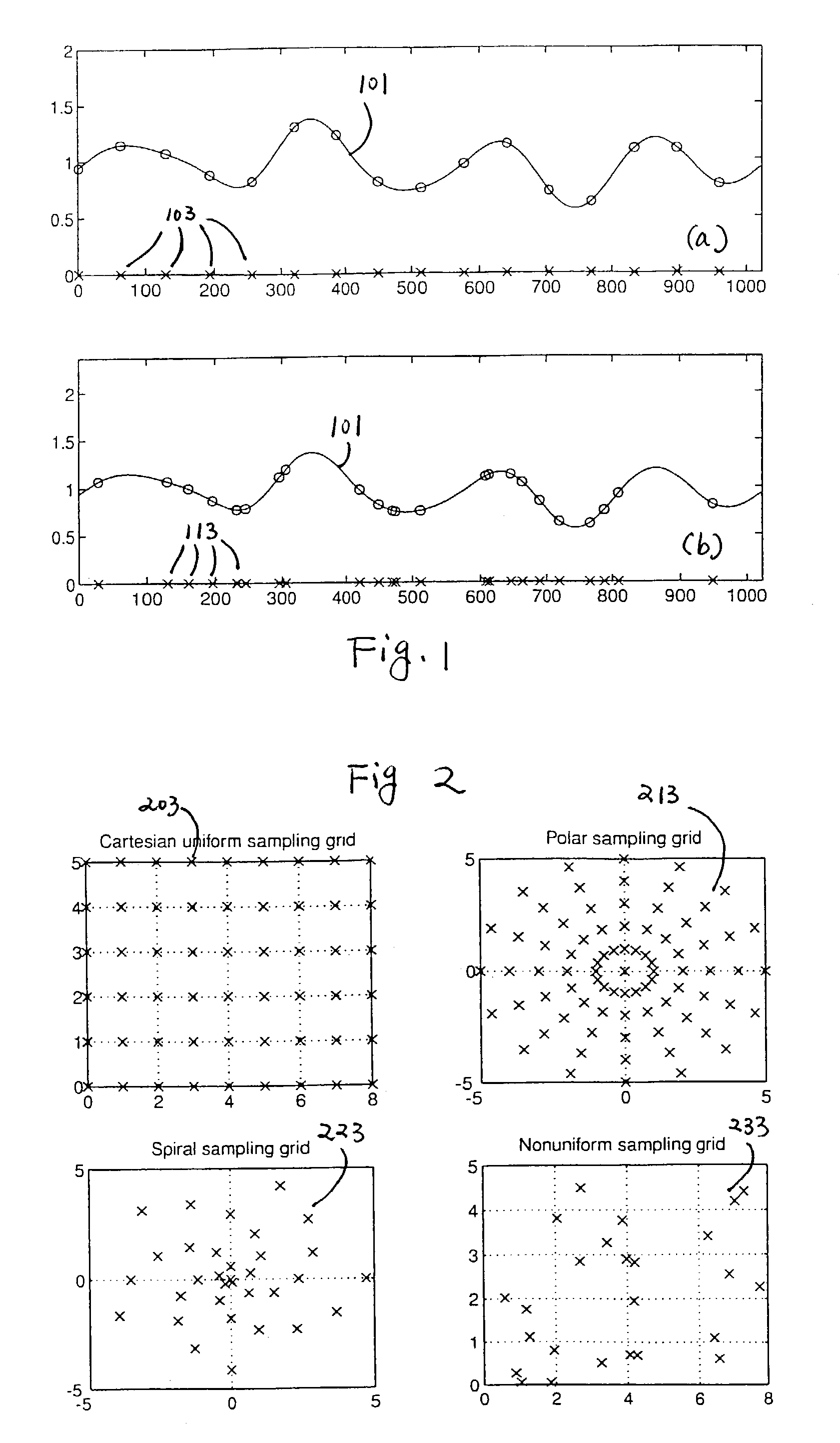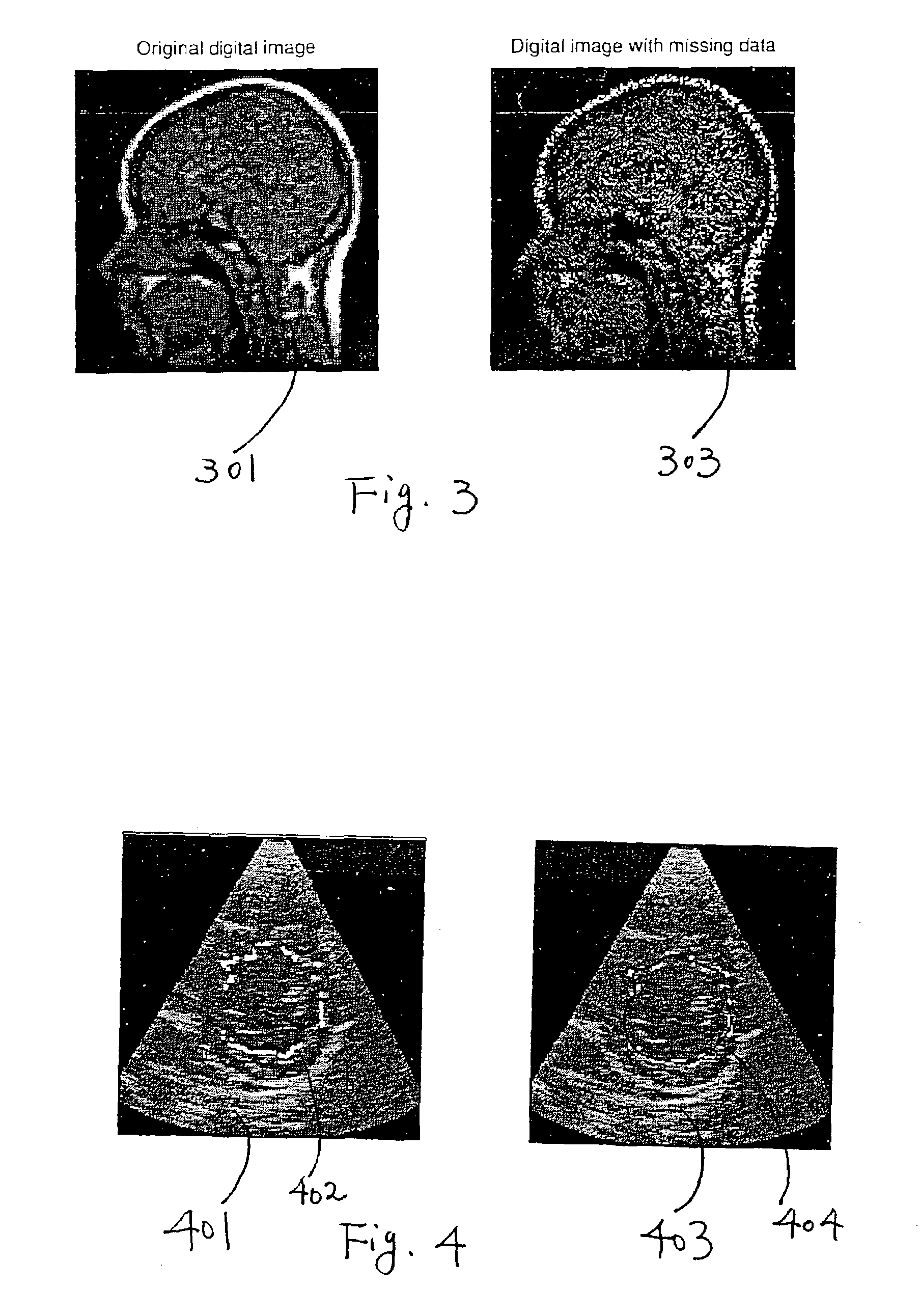System and methods of nonuniform data sampling and data reconstruction in shift invariant and wavelet spaces
a shift invariant wavelet space and data sampling technology, applied in the field of system and methods for data representation of objects of interest, can solve the problems of missing samples due to partial destruction of storage devices, methods are often not local, and the use of standard methods is difficult to achieve, so as to improve data conversion speed, facilitate parallel processing, and improve the effect of data conversion
- Summary
- Abstract
- Description
- Claims
- Application Information
AI Technical Summary
Benefits of technology
Problems solved by technology
Method used
Image
Examples
example 1
A Unified Framework for Uniform and Nonuniform Data Sampling in Shift Invariant Spaces
[0189]Approach Overview
[0190]Modern digital data processing of functions (or signals or images) always uses a discretized version of the original signal ƒ that is obtained by sampling ƒ on a discrete set. The question then arises whether and how ƒ can be recovered from its samples.
[0191]In one aspect, the present invention relates to a method for recovering information about an object of interest ƒ from a data set {ƒ(xj)} obtained from uniform or nonuniform data sample points xjεX, j being an indexing number, X representing the set of points where the object of interest ƒ has been sampled, wherein X may be perturbed by a noise, comprising the steps of sampling a set of data samples from the data set {ƒ(xj)}, iteratively framing the sampled set of data samples until the sampled set of data samples converges to a new set of data samples that has a size significantly smaller than the data set {ƒ(xj)},...
example 2
Fast Local Reconstruction Methods for Uniform and Nonuniform Data Sampling in Shift Invariant Spaces
[0385]Approach Overview
[0386]In one aspect, the present invention relates to a method for fast reconstruction of a function ƒ from its samples ƒ(xj), where ƒ belongs to a shift invariant space V(φ) and φ is a generator. If the generator φ has compact support, then the reconstruction is local quite in contrast to methods based on band-limited functions. In one embodiment, it is shown that the matrix of the corresponding linear system of equations is a positive-definite banded matrix. This special structure makes possible the fast local reconstruction algorithm in O(S2J) operations, where J is the number of samples and S is the support length of the generator φ. Further optimization can be achieved by means of data segmentation. Several numerical simulations according to the present invention are provided.
[0387]In another aspect, the present invention relates to a method for converting ...
PUM
 Login to View More
Login to View More Abstract
Description
Claims
Application Information
 Login to View More
Login to View More - R&D
- Intellectual Property
- Life Sciences
- Materials
- Tech Scout
- Unparalleled Data Quality
- Higher Quality Content
- 60% Fewer Hallucinations
Browse by: Latest US Patents, China's latest patents, Technical Efficacy Thesaurus, Application Domain, Technology Topic, Popular Technical Reports.
© 2025 PatSnap. All rights reserved.Legal|Privacy policy|Modern Slavery Act Transparency Statement|Sitemap|About US| Contact US: help@patsnap.com



